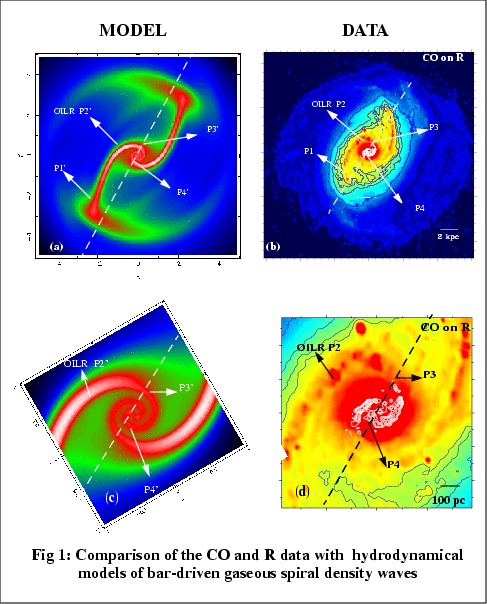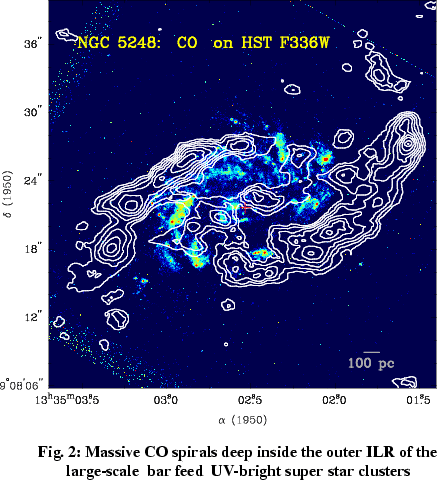Nested Bars and Nuclear Spirals: Fueling Central Starbursts and AGN
The study of dynamical processes which channel gas towards the center
of galaxies is central to understanding nearby starbursts and AGN, as well
as more distant UILRGs and QSOs. Nuclear bars nested within the primary
bar and nuclear spirals have been proposed as mechanisms for driving gas
further in, feeding central starbursts and AGN. A particularly
interesting example is provided by the grand-design spiral NGC 5248.
OVRO arcsecond resolution CO data and dynamical modeling of NGC 5248
suggests that a bar-driven gaseous spiral density wave (SDW) has
propagated deep inside the outer ILR of a large-scale bar (Fig. 1), triggered
the formation of super star clusters (SSCs) in a starburst ring (Fig. 2),
and possibly propagated down to 70 pc where features indicative of recent
activity exist (Jogee et al. 2002b).
This combination of observations and modeling provides some
of the best
evidence to date that a low central mass concentration, which may
be common in late-type galaxies, is particularly favorable to the
propagation of bar-driven gaseous SDW deep into the central region of
a galaxy, whereas a large central mass concentration favors processes
such as the decoupling of nuclear bars. For details see
Jogee, S., Shlosman, I., Laine, S., Englmaier, P., Knapen, J. H., Scoville, N. Z., & Wilson, C. D. 2002, 2002b, ApJ, Aug 10 (astro-ph/0202270):
Gas Dynamics in NGC 5248: Fueling a Circumnuclear
Starburst Ring of Super Star Clusters
Jogee, S., Knapen, J. H., Laine, S., Shlosman, I., &
Scoville, N. Z. 2002, ApJL, 2002a, ApJL, 570, L55 (astro-ph/0201208):
Discovery and Implications of a New Large-Scale Stellar Bar in NGC 5248



